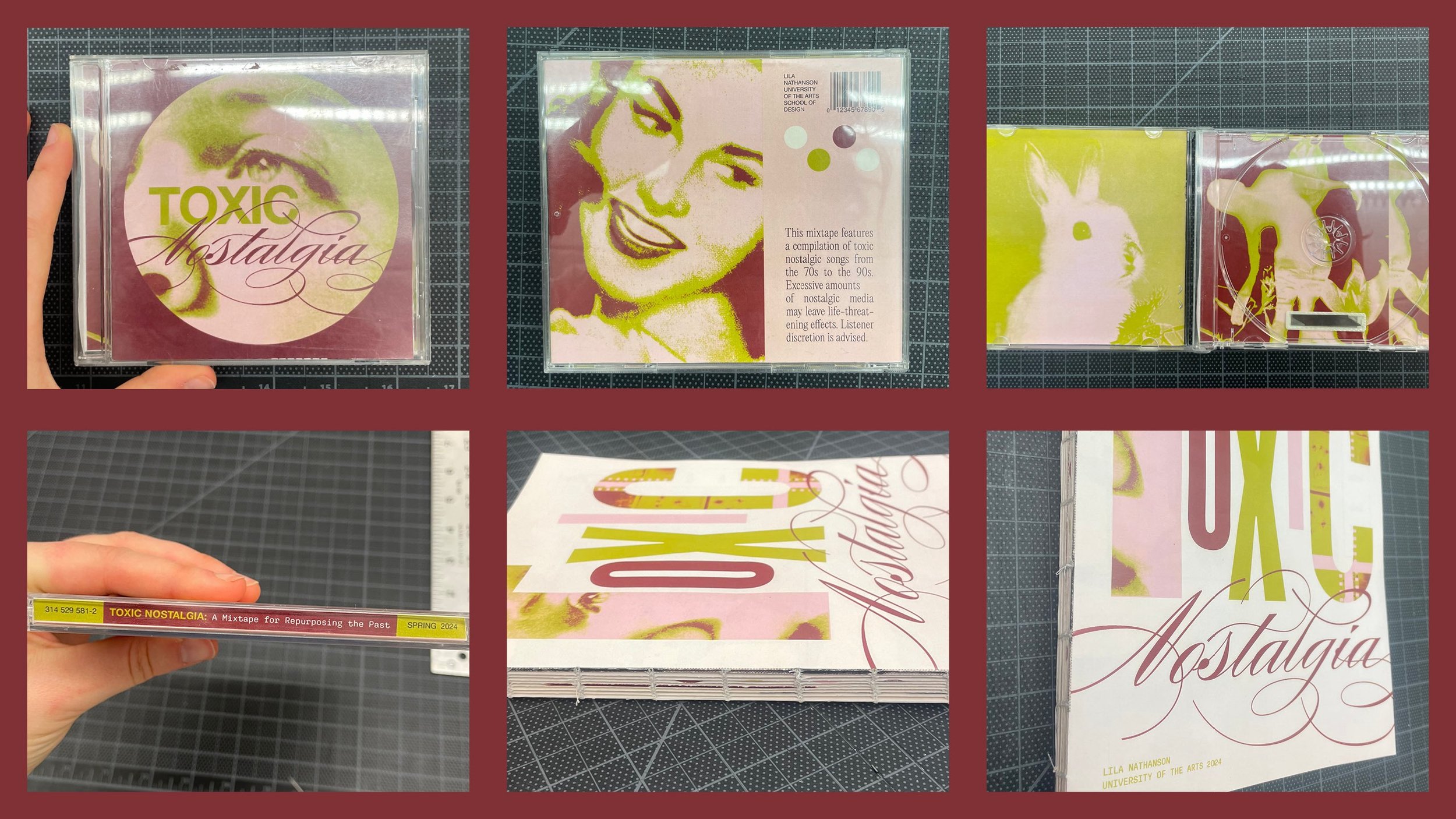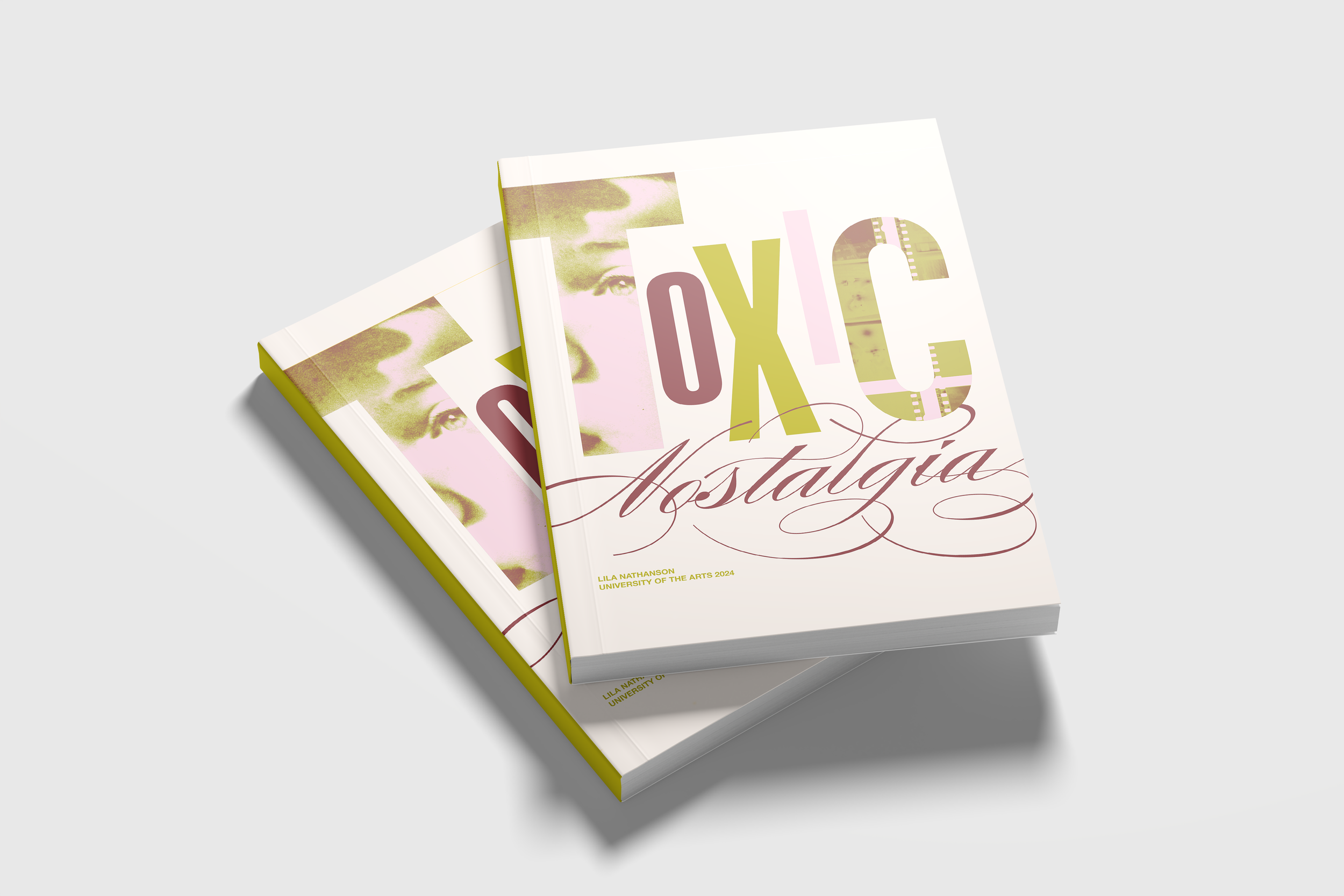
A tool for
repurposing the past.
Senior Capstone Project
UArts Graphic Design Program
2024-2025
Based on recent media trends of vintage aesthetics— is the modern consumer chasing “authenticity,” seeking comfort in the past, or getting caught in the web of trendy over-consumption?
At what point does nostalgia become toxic, and how can we repurpose it as a device to propel us forward, instead of backward?
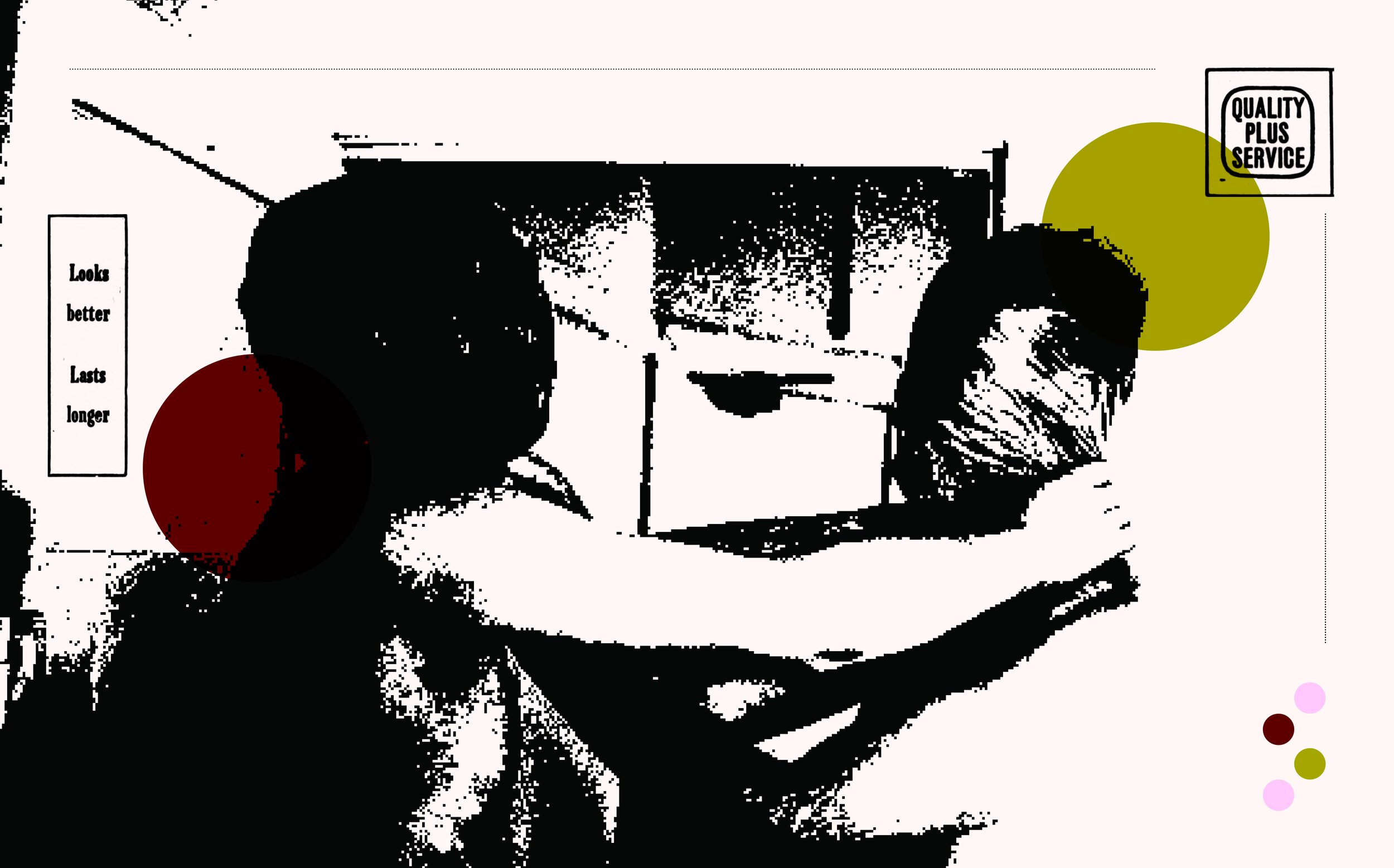
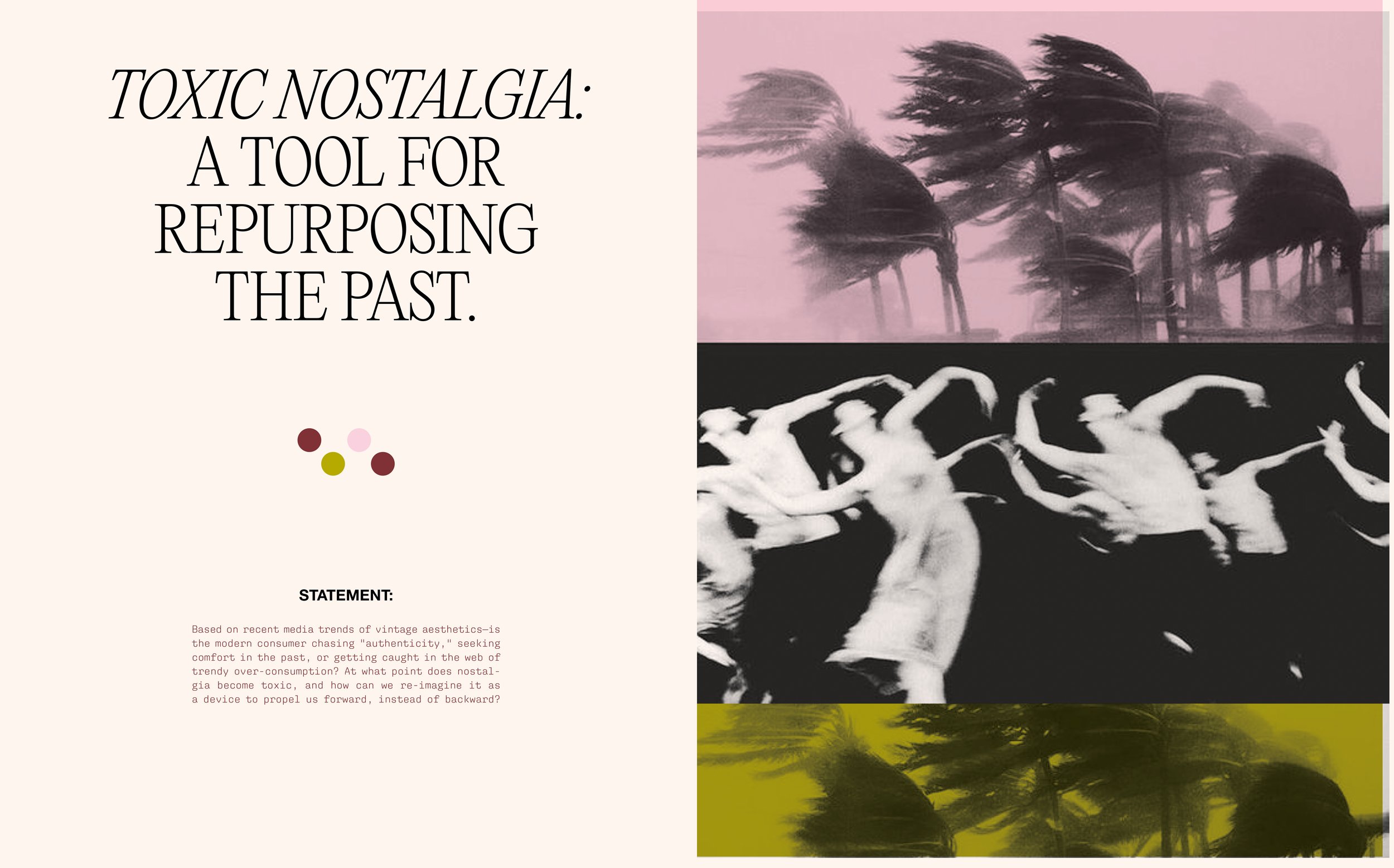
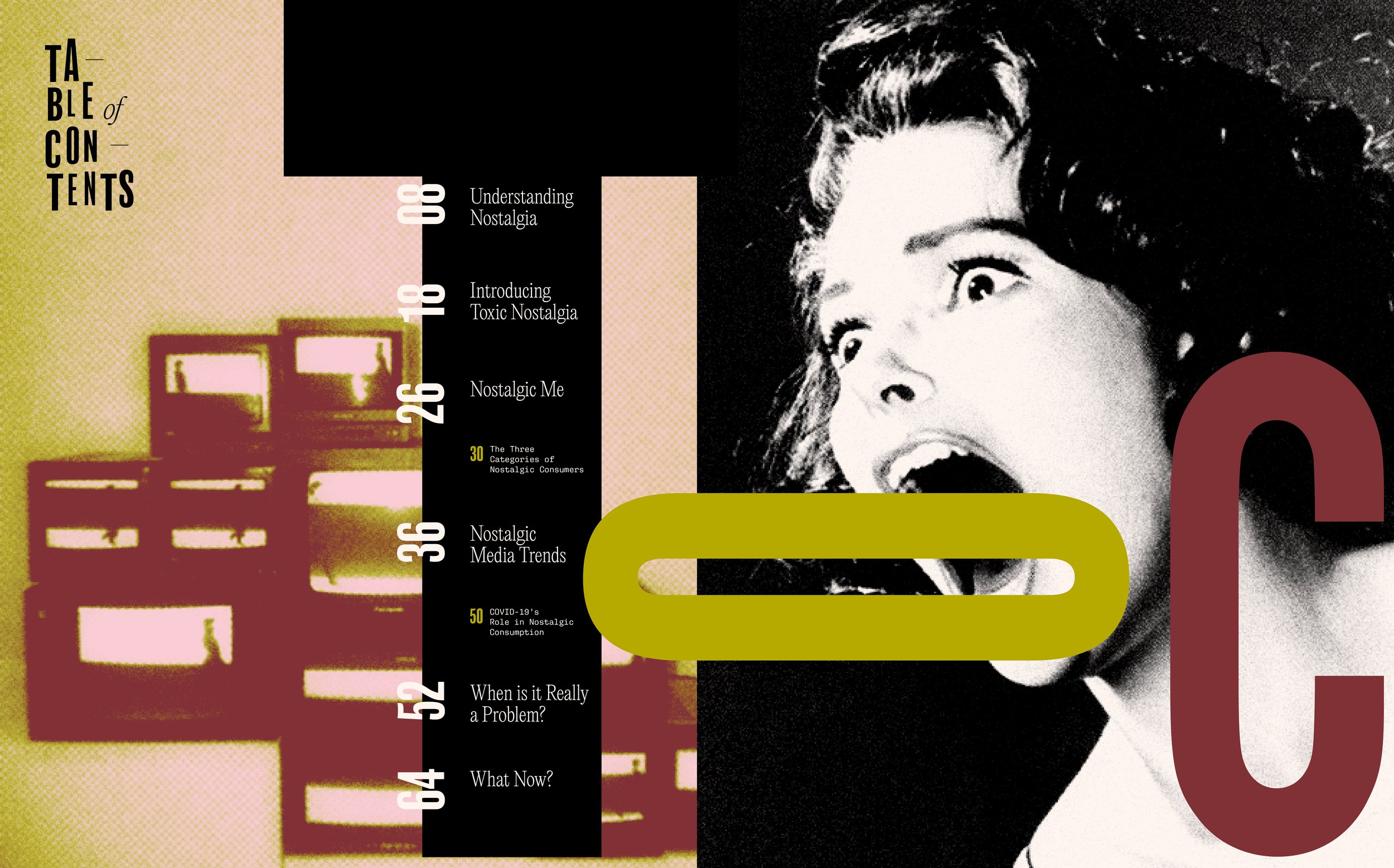

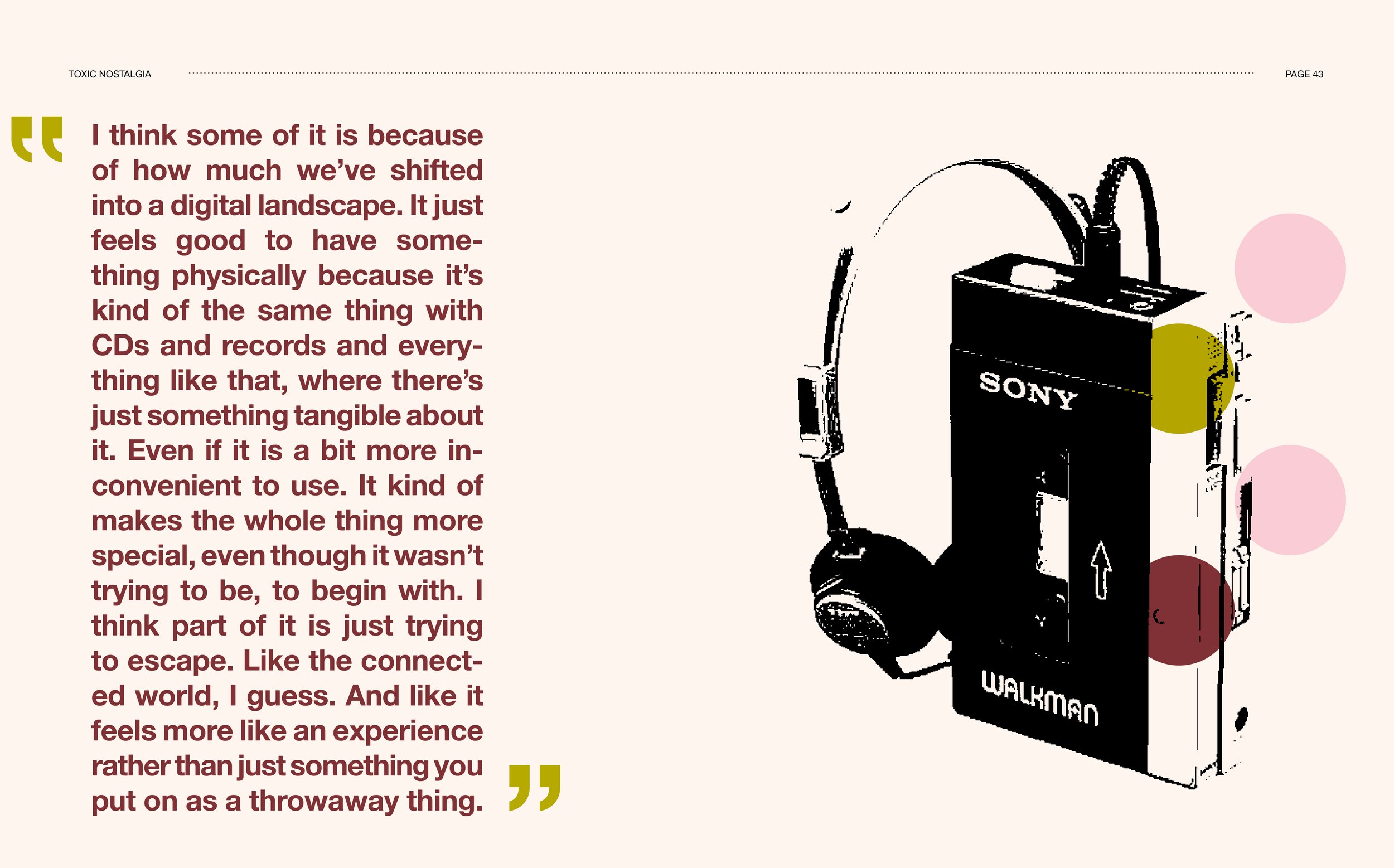
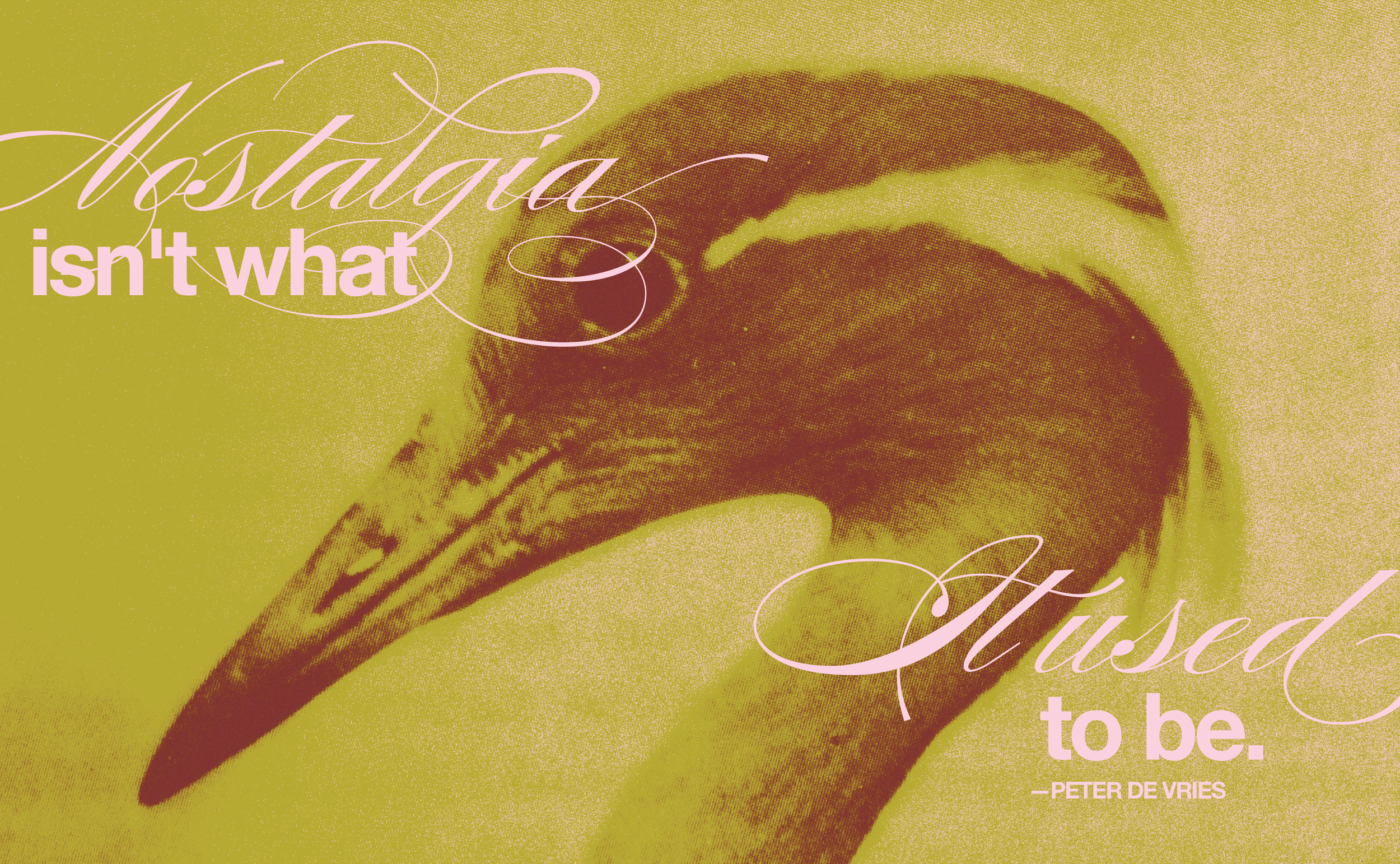
Image strategy
Sourced vintage photography
Gritty image treatments and a curated color palette, ‘puke green’ being my favorite— to induce feelings of anxiety and unease that go hand in hand with the content.
Process
I researched, wrote, designed, and hand-bound this book within the course of nine months. Hard and soft cover publications were crafted.
Components
7.5 x 9.25” hand-bound publication
Curated CD mixtape including jewel case design with booklet & poster
This mixtape and CD booklet allowed me to delve into my own nostalgic past, further exploring the question of desire over quality.
To emphasize this idea, I layered distortions over the tracks to reflect how analog media is often romanticized, regardless of the product’s technical value.
CD jewel case design and book binding process.
And a bonus poster!
Found folded up inside
the CD case.
The take away
Nostalgia can be an incredibly beautiful and useful coping mechanism. This dates back to as early as World War I, where soldiers’ letters from back home served as beacons of tomorrow.
But what we need to watch out for is when it becomes an all-consuming form of escapism. After all, doctors during WWI considered nostalgia a very serious disease.
Viewing this from a modern lens—and factoring in younger generations’ consumption of nostalgic items— I beg my audience to consider the role they’re actively playing. The present deserves our attention; it’ll keep moving with or without us. It’s up to you if you want to be a part of it or not.

